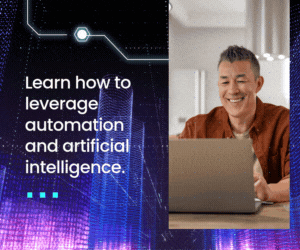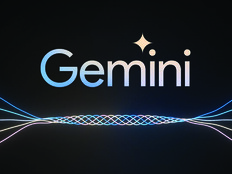Understanding the AI Talent Gap in the Public Sector
Across the public and private sectors, there exists a shortage of people who know how to bring AI to life. Additionally, the government lacks end users.
“The risk is that the government won’t be able to keep up with the expectations that citizens have from how they use technology in their personal lives,” says Wole Moses, chief artificial intelligence officer at Microsoft Federal Civilian.
Strategic concerns factor in as well.
“There’s a geopolitical risk, if we want to make sure that we stay competitively ahead of other countries in the way that we use technology,” Moses says.
And agencies risk falling short of the current demands around government efficiency if they can’t ramp up their AI skills.
DISCOVER: Industry can help agencies navigate cloud compliance.
“AI offers tremendous advantages around productivity,” Moses says. “If we aren’t using those tools, there’s the risk that we are not operating optimally.”
“The gap is not necessarily that much bigger in the federal government than it is everywhere else because of the fact that AI overall is really new,” Hein says. “It is incredibly important that the U.S. government has the ability to understand what these models are, the actual underlying technology of what we’re creating.”
How AI-Enabled Platforms Personalize and Scale Workforce Training
AI-enabled platforms for continuous learning can help agencies to close the gap around AI and a host of other skills.
“Training can be based on an individual’s skills or their abilities or their responsibilities,” Shaneman says. “That curriculum can be personalized based on their performance and their goals.”
An AI-customized curriculum meets employees where they’re at, rather than being one-size-fits-all.
RELATED: Artificial intelligence looks backward so people can move forward.
In a personalized learning system, the AI “should be able to understand what I need to do next, based on my usage of previous learning enablement modules,” Hein says. “Some of those goals might be top-down — saying, ‘I need my workforce capable of doing this’ — and some of them might be self-directed.”
AI also delivers learning at scale, which is a pressing need in government.
“The scale issue is in the sheer number of people that need to be trained and the sheer number of potential topics they need to be trained on, as well as the dearth of people who are available and qualified to do that training,” Moses says. “AI becomes an enabler of doing that training at scale, across all the people who need to be trained, across all those topics and at the right level of personalization.”
Key Features That Make Adaptive Learning Effective
Pacing is an important feature of AI-enabled learning that helps drive efficient and effective learning.
“Do I need a constant drip of information?” Hein says.
MORE FROM FEDTECH: Agencies need a method to fight the artificial intelligence “octopus.”
Formatting is a second key feature.
“Am I going to be better served learning through video or just reading through some documentation?” Hein says. “It can adjust that for each individual learner, based on what they’ve been successful on in the past.’
Another significant benefit is the ability of these platforms to deliver real-time feedback, with dynamic content that adjusts to the individual’s progress.
“The content can be adjusted, based on how they’re doing at the various progress checks,” Shaneman says.
Plus, these platforms are nonjudgmental.
“You can ask the same question 10 times, and the platform won’t get annoyed,” Moses says. “It’ll just continue to stay on an even keel and answer your questions.”
LEARN MORE: DOD’s toolkit puts ethics into action with AI.
Examples From Google, Microsoft and NVIDIA’s AI Training Solutions
For skills-building in support of career development, Goole’s Career Dreamer offers a “fun” way for employees to determine the skills they need to reach the next level, Hein says.
Career Dreamer walks the user through potential career progressions and the necessary learnings. And Google is working to expand similar AI-supported learning capabilities.
NVIDIA delivers the backbone that supports AI-driven learning platforms.
“It’s the AI-enabling infrastructure: chips, systems and software,” Shaneman says.
UP NEXT: NVIDIA’s new chips could shape AI standards.
Meanwhile, Microsoft recently launched an initiative that leverages AI-enabled training in support of workers who want to build up their own AI skills. For technologists, Microsoft Learn is an AI-enabled site that reaches across all technologies: AI, security, databases and application development.
Additionally, Microsoft’s LinkedIn Learning offers real-time insights into the most-needed job skills.
“That directly influences the training that’s offered through that site,” Moses says.












